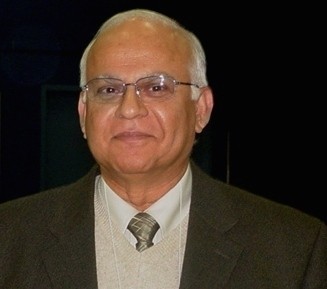
Zahir Shaikh is a professor of biomedical sciences at the University of Rhode Island and a member of the Executive Steering Committee for the Northeast Cyberinfrastructure Consortium.
The NECC is a five-state consortium dedicated to building a high-speed fiber optic network linking universities and research institutions in Rhode Island, Delaware, Maine, New Hampshire and Vermont. NECC recently won $17 million awards from the National Science Foundation and the National Institutes of Health.
Its most recently-completed leg, connecting the University of Vermont in Burlington to Albany, N.Y., was finished on Oct. 31. The consortium expects to finish the Burlington to Hanover, N.H., segment by February 2011.
Shaikh tells Providence Business News about Rhode Island’s need for speed, funds and how the Internet can solve global environmental and health problems.
PBN: So how does a professor of biomedical sciences get involved in building fiber-optic network for the Northeast?
SHAIKH: Besides being a professor in the College of Pharmacy at the University of Rhode Island, I also serve as director of the Rhode Island Institutional Development Award Network of Biomedical Research Excellence program. This is an infrastructure development program that has been supported since 2001 by grants ($42 million over 13 years) from the National Institutes of Health. The program supports more that 20 research projects and student training in faculty laboratories at the six institutions of higher education participating in the network. The directors of INBRE programs in the Northeast states hold regular videoconferences to discuss emerging issues and share best practices.
The lack of high-speed internet connectivity for sharing large volumes of scientific data was recognized by this group as a real barrier to scientific collaboration within and between our states and beyond. Each state had a slightly different need. In Rhode Island, while the high-speed fiber network exists in Providence and its vicinity, other parts of the state such as the Washington County, where URI is located, are connected at a snail’s pace. To help rectify this problem, in 2009 the INBRE program directors in the Northeast applied for supplemental funds from the National Institutes of Health for their state’s needs for improvements in the cyberinfrastructure.
The RI-INBRE program requested and received $1.28 million through the American Recovery and Reinvestment of 2009, with a majority of these funds dedicated to optical fiber installation between URI’s Kingston campus and the existing high speed OSHEAN network in the northern part of the state. The same year, ARRA funds for optical fiber connectivity between the Kingston campus, the Graduate School of Oceanography in Narragansett, and the OSHEAN network were also provide to URI by the National Science Foundation’s Experimental Program to Stimulate Collaborative Research. So, together, these programs have brought in nearly $2.5 million to URI for cyberinfrastructure improvement and to facilitate research.
PBN: How has the project been progressing so far in Rhode Island?
SHAIKH: Compared to the other Northeast states, the progress on this project is slow in Rhode Island. We are in the planning stage and the university is deciding on how best to accomplish the task in the most cost effective manner. However, the ARRA funding has a time limit and will expire soon, so we have a relatively short window of opportunity left to get it all accomplished.
PBN: How does NECC’s project fit in with other fiber-optic network projects like OSHEAN’s Beacon 2.0?
SHAIKH: OSHEAN’s Beacon 2.0 project, which was recently funded by a Broadband Technologies Opportunities Program grant, will provide high-speed connectivity throughout the state. OSHEAN is the Internet and Internet II provider for URI and other educational institutions, hospitals and other clients. The NECC fiber project is complimentary to what OSHEAN plans to do in Beacon 2.0. So, URI is coordinating the NECC project with OSHEAN so as to minimize overlap and maximize coverage.
PBN: In a statement on NECC’s mission page it says: “Rhode Island, despite its size, has extremely poor connectivity in the southern part of the state.” Do you think this is still the case, or do you think the connectivity has improved since 2006 when the consortium was founded?
SHAIKH: The connectivity remains poor and that is what the NECC projects and OSHEAN’s Beacon 2.0 would change for the better. The new fiber network would allow data transfer at a speed of 10,000 megabits per second. Fortunately, we no longer have shortage of funds for this purpose, as over $38 million have become available for the project statewide. Now it is not a matter of how, but when will it be in place for us all to use. At that point, we could become one of the most connected states in the nation. I hope that future is here soon.
PBN: What can we expect to see from NECC in Rhode Island in the future?
SHAIKH: By improving the cyberinfrastructure in the Northeast, the NECC will no doubt facilitate collaborative inter-institutional research. In fact, we are already collaborating within the NECC states for providing training in genomics research. Also, we are pilot testing our data sharing and remote storage capabilities. Once the network connectivity is fully operational, we will be poised to further promote research collaborations across our states that will solve local and global problems in such areas as the environment and health.












